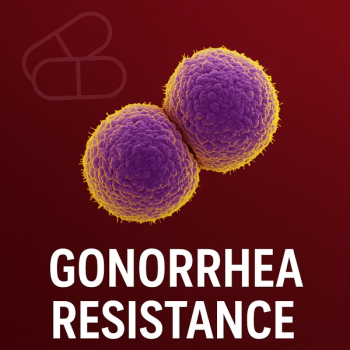
What is Driving the Global Expansion of Lyme Disease?

Climate-driven changes and other drivers of the expanding geographic range of Ixodes ticks and Lyme disease are explored.
First reported in the Northeast US in the late 1970s, Lyme disease has become the most common tick-borne illness in the country, where it is estimated 476,000 cases are diagnosed and treated annually.1 Lyme disease is now endemic across much of the northern hemisphere including in Europe, and many parts of Asia.2 In the family Ixodidae, among the genus Ixodes, there are 4 species—I scapularis and I pacificus in the US, I ricinus in Europe, and I persulcatus in Eurasia—that transmit Borrelia burgdorferi, the bacterium that causes Lyme disease. These hematophagous ectoparasites have a 4-stage (egg, larva, nymph, and adult), 3-host life cycle (Figure 1) that typically spans 2 to 3 years in total.2,3
Ixodes spp feed once per life stage to molt or reproduce. They use questing, a passive host-seeking strategy in which they climb vegetation and extend their front legs waiting to latch onto a passing host. Questing height varies by life stage and preferred host size. Larvae quest low to the ground and feed on small to medium-sized reservoir hosts including rodents, reptiles, and birds.6,7 Nymphs also quest near the ground and feed on similar hosts, but may parasitize larger mammals including humans.6,7 Adults quest higher to find larger mammals for mating activities, including but not limited to deer, raccoons, foxes, domestic animals, and humans.6,7Adult males typically attach to but do not feed, whereas females attach to and feed on mammals.6,7 After mating, both adults fall off their host. Then, the male dies, whereas the female lays eggs before dying (Table 1).
Borrelia burgdorferi is not transmitted vertically (ie, transovarially), so Ixodes spp typically acquire the infection as larvae from an infected reservoir host. The infection is maintained through the nymphal and adult stages by transstadial transmission. Nymphs are the primary vectors to humans, though adults can also transmit the pathogen. However, neither adult nor nymphal Ixodes spp can acquire B burgdorferi from large mammals, because they are dead-end hosts. Thus, large mammals play no role in transmission, because once infected, they do not develop sufficient spirochetemia to transmit the pathogen to an uninfected tick. Instead, large mammals serve as reproductive hosts, supporting tick mating activities and helping to maintain and disperse tick populations.
In this century, the worldwide burden of Lyme disease has increased, and it is now being observed in areas of the globe where it had previously not been reported. For example, Lyme disease is an emerging vector-borne zoonotic disease in Canada.8,9 In 2009, Canada reported 144 locally-acquired and travel-related cases; preliminary data indicate there were 5239 such cases in 2024.10 Similarly, in Europe, cases are reportedly increasing, but due to the large variance in the incidence rates produced by varying surveillance and reporting methods across Europe, attempts to accurately quantify such a trend likely underestimate the true burden of Lyme disease.11,12
Several factors are driving the global expansion of Ixodes spp and Lyme disease in overlapping ways that make isolating climate’s specific role challenging.13 The effect of these drivers including land use changes, improved surveillance, and climate-related effects on Ixodes spp, and its reservoir and reproductive hosts on the global expansion of Ixodes spp and Lyme disease are summarized below.
Land Use Changes
Ixodes. scapularis, the primary vector of Lyme Disease in North America, is an ancient species estimated to have existed in the present-day US since the Middle Pleistocene.14 Thought to have originated in the Southeast, I scapularis expanded northward after the Last Glacial Maximum and was established in the densely forested eastern US by the 16th century around the beginning of European colonization.14 Experts believe deforestation and hunting from the 1600s through the late 1800s significantly redistributed and reduced host populations in the Northeast, Upper Midwest, and Ohio River Valley regions of the US, likely contracting the geographical range of I scapularisto the southeastern and south central states.14,15 Long-term conservation and land-use recovery efforts in the mid-20th century have helped restore host populations, particularly in the Northeast. Thus, along with climate-driven changes, tick range expansion in the Northeastern US, and perhaps elsewhere, may reflect a reclamation of their historically occupied habitat.15
Increased Surveillance
Prior to the mid-1970s and the discovery that I scapularis could transmit infections to humans, tick surveillance was limited in scope. With the identification of Lyme disease, such efforts expanded significantly. Case counts rose steadily as local and national agencies implemented standardized surveillance and reporting systems.8,14-17 Changes in case definitions, improved diagnostics, and greater awareness among healthcare providers and the public have also likely contributed to the observed increases.13,18 While these factors may have contributed to increased incidences and obscured the specific role of climate change in the global spread of Ixodes spp, they have also enhanced the understanding of Lyme disease. Mapping tick distributions over time allowed scientists to document range expansion and disease emergence.2,14,19-21 Using 20 years of Canadian surveillance data, researchers found that I scapularis spread faster during the warmest years, independent of other factors.21 In Norway, a seven-year field study comparing data to historical surveillance records showed a measurable northward shift in I ricinus, which was attributed in part to climate-driven increases in growing season length.22 In this study, the prevalence of Borrelia spp. among nymphs and adults declined as the latitude increased, but still the incidence of Lyme disease remained highest in the southern-most part of northern Norway.22 While these efforts show that climate-driven changes are affecting Ixodes spp. and Lyme disease, the lack of long-term global surveillance limits our understanding of the full extent of this influence.19
Climate Influences on the Vector
Ixodes spp. spend only a tiny fraction of their lifespan, typically less than a few weeks, on a host, with the majority of their time off-host in habitats including forests, woodlands or grasslands, where they are exposed to environmental conditions.16 Thus, ground microclimates and weather factors (eg, temperature, humidity, and precipitation), are important determinants that affect Ixodes spp development, survival, questing behavior, and where they live. Normally, under extreme environmental conditions Ixodes spp succumb to dehydration (ie, water loss) but can resist desiccation (ie, a fatal state of complete water loss) using physiological mechanisms and behavioral strategies. While they are off-host, Ixodes spp maintain water balance using a complex physiological process of absorption and reingestion of water vapor from humid air.13,16,23
Humidity, precipitation, and temperature influence Ixodes spp questing and survival, but they do not uniformly restrict nor facilitate the distribution of tick populations. In laboratory studies at relative humidity below 90%, I scapularis is highly prone to desiccation but the threshold at which dehydration starts differs across life stages.24-26 Off-host, established populations of Ixodes spp can avoid dehydration and the desiccating effects of low humidity for months by sheltering under leaf litter on the forest floor or in soil. Low humidity is thought to prompt Ixodes spp. to pause questing and retreat under leaf litter to rehydrate. This behavior consumes energy and reduces host-seeking activity, indirectly impacting survival.23,27 Precipitation similarly impacts ticks through its effects on humidity.2 In addition, heavy precipitation decreases questing by washing the tick off of vegetation or causing them to be covered by mud or sediment.23 Extensive flooding, if prolonged, can kill the tick.23 Temperature extremes, whether hot or cold, can also reduce questing, indirectly influencing survival. The combined effects of temperature and humidity can delay or ultimately make questing and feeding activities prohibitive, particularly for larvae or nymphs, thereby decreasing their survival (Table 2).13
Laboratory studies exploring the relationship between temperature and reproduction show warming temperatures accelerate tick development, shortening the time to egg-laying, hatching, and molting while colder temperatures slow these processes. Temperature extremes, whether hot or cold can inhibit development altogether.28 Field studies suggest cold temperatures negatively impact survival and population abundance more than warm temperatures.15 However, like humidity, the detrimental effects of cold temperature can be mitigated by insulation provided by sheltering under leaf litter or even a layer of snow (Table 2). However, removing shelter, reduces survival and leads to lower population abundance.13,15,23
Laboratory and field studies on climate impacts help inform predictive models for range expansion, but their results should be interpreted with caution, as they cannot fully account for complex variables like the multi-year life cycle of Ixodes spp., stage-specific behavior, or the effects of natural temperature and humidity fluctuations on survival, development, and reproduction.15 Studying temperature effects on tick development is complicated by diapause, a genetically programmed pause in activity or development experienced by all Ixodes spp.23 They undergo behavioral and developmental diapause.23 Behavioral diapause delays host-seeking and is triggered by environmental cues like shortening day length (ie photoperiod) and temperature.23 Developmental diapause delays molting and egg-laying and is primarily triggered by photoperiod.23 Diapause expression varies by Ixodes spp. population, life stage, and their geographical distribution.28 It remains unclear if, or how much temperature can alter photoperiodic control of development.15
Despite the challenges, prolonged surveillances found the latitudinal range expansion for several Ixodes spp, including I ricinus in eastern Russia and I scapularis in Canada, was due in part to climate-driven change.21,22,29 In addition to expanding their latitudinal range, data from the Czech Republic collected over 20 years correlated with a rise in the altitudinal limit of I Ricinus and B burgdorferi from 750 meters (2460 feet) to 1065 meters (3494 feet) above sea level with a 1.4 °C (34.5°F) rise in mean annual air temperature (Table 2).30
Changes in Reservoir and Reproductive Hosts
The primary reproductive hosts for Ixodes spp are deer including, Odocoileus spp in North America and Cervus elaphus and Capreolus capreolus in Europe.31 However, the precise relationship between deer density, tick density, and Lyme disease risk remains unclear.31 As discussed above, deforestation and hunting had a significant impact on the distribution of a primary reproductive host for Ixodes spp, the white-tailed deer (Odocoileus virginianus). This is believed to have led to a contraction of the population of Ixodes spp. In contrast, climate change has minimal direct impact on the distribution of I scapularis hosts, including its primary reservoir, the white-footed mouse (Peromyscus leucopus) and its reproductive hosts, because they are warm blooded. While climate change may not have a direct physiological effect on hosts, it can lead to geographically positive or negative host range changes by opening new habitats or making existing ones unfavorable. Though these effects are unpredictable, the northward expansion of Peromyscus leucopus in Canada has already been associated with climate change.13
Conclusion
Ixodes spp and Lyme disease have clearly expanded globally, partly due to climate-driven changes. However, isolating the exact extent of the influence from climate is challenging given the tick’s complex life cycle and host interactions. Other factors such as human activity, land use, host migration, and improved surveillance also contribute to this expansion. Surveillance programs have also helped improve diagnostics and awareness of Lyme disease. Such efforts should continue to be supported and expanded to areas being impacted by the drivers influencing the expansion of Ixodes spp and Lyme disease. Clinicians should be aware of the expanding geography of Lyme disease and Ixodes spp. They should check with local and national public health resources to know if they are in an area with increased risk of exposure. Regardless of what region of the country they practice in, clinicians should also be aware of the expanding geography of Lyme disease and its vector so they can effectively educate individuals on how best to protect themselves while living or travelling to affected areas or evaluate the exposure risk in those who have sustained a tick bite.
Learn more:
References
Kugeler KJ, Schwartz AM, Delorey MJ, Mead PS, Hinckley AF. Estimating the Frequency of Lyme Disease Diagnoses, United States, 2010-2018. Emerg Infect Dis. 2021;27(2):616-619. doi:10.3201/eid2702.202731
Stone BL, Tourand Y, Brissette CA. Brave New Worlds: The Expanding Universe of Lyme Disease. Vector Borne Zoonotic Dis. 2017;17(9):619-629. doi:10.1089/vbz.2017.2127
Ticks. Centers for Disease Control and Prevention DPDx-Laboratory Identification of Parasites of Public Health Concern. Updated December 31, 2017, Accessed April 2, 2025.
https://www.cdc.gov/dpdx/ticks/index.html TickEncounter Resource Center. Blacklegged (Deer) Tick (Ixodes scapularis). University of Rhode Island. https://web.uri.edu/tickencounter/species/blacklegged-tick/. Accessed May 25, 2025.
TickEncounter Resource Center. Western-Blacklegged Tick (Ixodes pacificus). University of Rhode Island. https://web.uri.edu/tickencounter/species/western-blacklegged--tick/. Accessed May 25, 2025.
Carroll JF, Schmidtmann ET. Questing behavior of Ixodes scapularis (Acari: Ixodidae) nymphs and adults. J Med Entomol. 1992;29(3):499-505.
Mejlon HA, Jaenson TGT. Questing behaviour of Ixodes ricinus ticks (Acari: Ixodidae). Exp Appl Acarol.1997;21(12):747-754.
Kulkarni MA, Berrang-Ford L, Buck PA, Drebot MA, Lindsay LR, Ogden NH. Major emerging vector-borne zoonotic diseases of public health importance in Canada. Emerg Microbes Infect. 2015;4(6):e33. Published 2015 Jun 10. doi:10.1038/emi.2015.33
Doby JM, Anderson JF, Couatarmanac'h A, Magnarelli LA, Martin A. Lyme disease in Canada with possible transmission by an insect. Zentralbl Bakteriol Mikrobiol Hyg A. 1987;263(3):488-490. doi:10.1016/s0176-6724(87)80116-5
Lyme Disease Monitoring Government of Canada Canada.ca Updated May 2, 2025. Accessed May 2, 2025.
https://www.canada.ca/en/public-health/services/diseases/lyme-disease/surveillance-lyme-disease.html Tsoumani ME, Papailia SI, Papageorgiou EG, Voyiatzaki C. Climate change impacts on the prevalence of tick-borne diseases in Europe. Environ Sci Proc. 2023;26:18.
Sykes RA, Makiello P. An estimate of Lyme borreliosis incidence in Western Europe. J Public Health (Oxf). 2017;39(1):74-81. doi:10.1093/pubmed/fdw017
Ostfeld RS, Brunner JL. Climate change and Ixodes tick-borne diseases of humans. Philos Trans R Soc Lond B Biol Sci. 2015;370(1665):20140051. doi:10.1098/rstb.2014.0051
Eisen L, Eisen RJ. Changes in the geographic distribution of the blacklegged tick, Ixodes scapularis, in the United States. Ticks Tick Borne Dis. 2023;14(6):102233. doi:10.1016/j.ttbdis.2023.102233
Eisen RJ, Eisen L. Evaluation of the association between climate warming and the spread and proliferation of Ixodes scapularis in northern states in the Eastern United States. Ticks Tick Borne Dis. 2024;15(1):102286. doi:10.1016/j.ttbdis.2023.102286
Beard CB, Eisen RJ, Barker CM, Garofalo JF, Hahn M, Hayden M, Monaghan AJ, Ogden NH,SchrammPJ. 2016: Ch. 5: Vectorborne Diseases. The Impacts of Climate Change on Human Health in the United States: A Scientific Assessment. U.S. Global Change Research Program, Washington, DC, 129–156.
http://dx.doi.org/10.7930/J0765C7V Davidson A, Kelly PH, Davis J, Major M, Moïsi JC, Stark JH. Historical Summary of Tick and Animal Surveillance Studies for Lyme Disease in Canada, 1975-2023: A Scoping Review. Zoonoses Public Health. 2025;72(1):9-22. doi:10.1111/zph.13191
Telford SR 3rd, Stewart PE, Bloom ME. Increasing Risk for Tick-Borne Disease: What Should Clinicians Know? [published correction appears in JAMA Intern Med. 2024 Aug 1;184(8):993. doi: 10.1001/jamainternmed.2024.3784.]. JAMA Intern Med. 2024;184(8):973-974. doi:10.1001/jamainternmed.2024.1754
Nuttall PA. Climate change impacts on ticks and tick-borne infections. Biologia. 2022;77(6):1503-1512.
Guillot C, Badcock J, Clow K, et al. Sentinel surveillance of Lyme disease risk in Canada, 2019: Results from the first year of the Canadian Lyme Sentinel Network (CaLSeN). Can Commun Dis Rep. 2020;46(10):354-361. Published 2020 Oct 1. doi:10.14745/ccdr.v46i10a08
Leighton PA, Koffi JK, Pelcat Y, Lindsay LR, Ogden NH. Predicting the speed of tick invasion: an empirical model of range expansion for the Lyme disease vector Ixodes scapularis in Canada. J Appl Ecol. 2012;49(2):457-464.
Hvidsten D, Frafjord K, Gray JS, et al. The distribution limit of the common tick, Ixodes ricinus, and some associated pathogens in north-western Europe. Ticks Tick Borne Dis. 2020;11(4):101388. doi:10.1016/j.ttbdis.2020.101388
Ogden NH, Ben Beard C, Ginsberg HS, Tsao JI. Possible Effects of Climate Change on Ixodid Ticks and the Pathogens They Transmit: Predictions and Observations. J Med Entomol. 2021;58(4):1536-1545. doi:10.1093/jme/tjaa220
Telford SR 3rd, Stewart PE, Bloom ME. Increasing Risk for Tick-Borne Disease: What Should Clinicians Know? [published correction appears in JAMA Intern Med. 2024 Aug 1;184(8):993. doi: 10.1001/jamainternmed.2024.3784.]. JAMA Intern Med. 2024;184(8):973-974. doi:10.1001/jamainternmed.2024.1754
Stafford KC 3rd. Survival of immature Ixodes scapularis (Acari: Ixodidae) at different relative humidities. J Med Entomol. 1994;31(2):310-314. doi:10.1093/jmedent/31.2.310
Yoder JA, Lorenz AL, Rosendale AJ, Benoit JB. Short day exposure suppresses water loss rate in the lone star tick Amblyomma americanum and blacklegged tick Ixodes scapularis (Acari: Ixodidae). Int J Acarol. 2016;42(6):324-329 doi:10.1080/01647954.2016.1188853
Berger KA, Ginsberg HS, Dugas KD, Hamel LH, Mather TN. Adverse moisture events predict seasonal abundance of Lyme disease vector ticks (Ixodes scapularis). Parasit Vectors. 2014;7:181. Published 2014 Apr 14. doi:10.1186/1756-3305-7-181
Ogden NH, Lindsay LR, Beauchamp G, et al. Investigation of relationships between temperature and developmental rates of tick Ixodes scapularis (Acari: Ixodidae) in the laboratory and field. J Med Entomol. 2004;41(4):622-633. doi:10.1603/0022-2585-41.4.622
Korotkov Y, Kozlova T, Kozlovskaya L. Observations on changes in abundance of questing Ixodes ricinus, castor bean tick, over a 35-year period in the eastern part of its range (Russia, Tula region). Med Vet Entomol. 2015;29(2):129-136. doi:10.1111/mve.12101
Danielová V, Daniel M, Schwarzová L, et al. Integration of a tick-borne encephalitis virus and Borrelia burgdorferi sensu lato into mountain ecosystems, following a shift in the altitudinal limit of distribution of their vector, Ixodes ricinus (Krkonose mountains, Czech Republic). Vector Borne Zoonotic Dis. 2010;10(3):223-230. doi:10.1089/vbz.2009.0020
Kilpatrick AM, Dobson ADM, Levi T, et al. Lyme disease ecology in a changing world: consensus, uncertainty and critical gaps for improving control. Philos Trans R Soc Lond B Biol Sci. 2017;372(1722):20160117. doi:10.1098/rstb.2016.0117
Newsletter
Stay ahead of emerging infectious disease threats with expert insights and breaking research. Subscribe now to get updates delivered straight to your inbox.


















































































































































































































































































